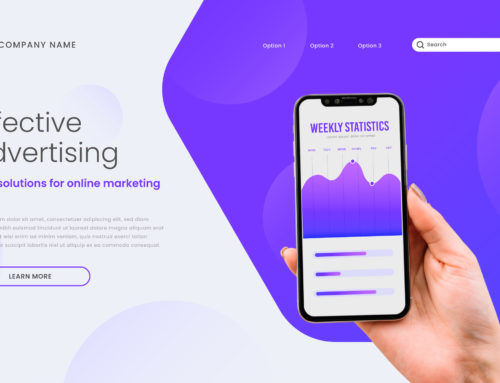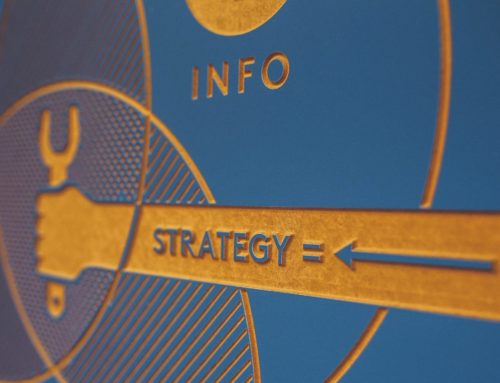Harvard Business School professor Sunil Gupta and co-authors released a paper exploring “Do Display Ads Influence Search: Attribution and Influence in Online Advertising.” The questions driving the study were straightforward. First, do display ads make a difference in moving buyers along the sales funnel? Second, if yes, then how much of a difference do they make and for how long?
Most online marketing professionals read the above and immediately form an opinion. “Yes, of course,” you’re saying, based on years of personal experience in the industry. Or perhaps your response is “No, not in the case of industry X or Y,” based on a very specific anecdotal case you worked on.
But before we dive into the answer, and why it matters to conversion optimization testing, let’s explore a different question. What are the chances that your gut reaction answer is right – not just to this specific line of inquiry in online marketing, but how you make decisions about your business in general and in your understanding of how your customers make buying decisions?
Photo Credit: jepoirrier via Compfight cc
Reliable Decision Making in Business
There’s a common misconception about Conversion Rate Optimization (CRO). Or perhaps better stated, it’s more of a missed nuance. When entrepreneurs are first introduced to the CRO discipline, there’s often an oversimplification in terms of understanding what we’re really doing. It typically falls into one of two categories:
- CRO is about informing decisions with data.
- CRO is about optimizing a specific marketing or sales piece to determine which option among two or more (e.g. copy, color, decision, structural approach) performs better, and drives more revenue.
Both of these assumptions are correct: CRO technically does both of those things. But at a deeper level, CRO is about helping you understand the underlying psychology that’s at work in your audience, and identifying the levers of influence that you can use to trigger specific actions. These “actions” are understood as conversions on your website or email marketing, for instance. But in reality, these actions are the result of your prospects, customers, or visitors making certain decisions.
Effective CRO helps you understand what’s happening in a prospect’s mind as they’re making a series of small decisions (E.G. Do I sign up for the e-list? Do I make a purchase? Do I click on this link?), and what you can do at every touch point in the customer experience to make the answer to those decisions “yes” until you reach an action that results in revenue.
In theory, it sounds easy enough. Using data and testing methodology is how you uncover the answers for your specific situation and apply it. But there’s another layer underneath this that’s important to understand. It’s about what the Institute of Decision Making has called “Marketing to Crazy People.”
Why do we need to exert such subtle influence on our customers, why is it so hard to do, and why can’t we just trust our gut instincts?
The Way We Make Decisions Is Not Efficient
To understand why CRO is both necessary and effective, it’s important to understand how complex and inefficient human beings’ decision making processes are. They are by no means linear.
Wharton Business School professor Jonah Berger and colleagues published an interesting study on “Decision Quicksand.” Here’s the executive summary, explaining why we often over invest in unimportant decisions and get bogged down by trivia:
People often get unnecessarily mired in trivial decisions. Four studies support a metacognitive account for this painful phenomenon. Our central premise is that people use subjective experiences of difficulty while making a decision as a cue to how much further time and effort to spend. People generally associate important decisions with difficulty. Consequently, if a decision feels unexpectedly difficult, due to even incidental reasons, people may draw the reverse inference that it is also important and consequently increase the amount of time and effort they expend. Ironically, this process is particularly likely for decisions that initially seemed unimportant because people expect them to be easier (whereas important decisions are expected to be difficult to begin with). Our studies demonstrate that unexpected difficulty not only causes people to get caught up in unimportant decisions but also to voluntarily seek more options, which can increase decision difficulty even further.
In other words, it’s hard to discern what’s truly important. And when a decision is important, we’re often paralyzed by the myriad number of options we face and focus on the right things. Stop for a minute, and think about how that impacts both marketers and their customers.
Psychology and behavioral economics are rich in thousands of theories and studies that help us understand the way the human mind works. But what it all boils down to is this: understanding which decisions matter and how those decisions get made is difficult. The insights and data from structured testing during conversion optimization can help overcome this.
So this is where common sense comes in…..right?
In the absence of real data, we tend to fall into one of three traps. These are trusting our intuition without validating, blindly accepting “common best practices” as truth, or taking guru wisdom to heart without testing our assumptions. Let’s break down why each of these is a bad idea.
Common sense: There’s a phenomenon in psychology that’s referred to as “availability cascade.” The idea itself is simple. There’s a certain body of knowledge that often gets referred to as common sense, best practices, or “general knowledge.” What starts out as a simple insight into a complex process starts taking on steam. Because of its apparent wisdom, it catches on and becomes popular with thinkers in a given space. It becomes part of the discourse around a particular issue, and is not tested. But it becomes accepted, partially because it seems obvious and partially because a bunch of trusted people say it’s a good idea.
How many bits of online marketing common sense have you applied, only to find out that it’s had no effect or a negative effect on your business?
Guru bias: I’m calling the second effect Guru bias. The idea here is that because someone is a trusted authority or an expert, that everything they say is taken as gospel. There are a number of problems with this, but let’s start with why experts are great. They bring tremendous pattern recognition to bear, and can help us formulate ideas that help move our business forward. By incorporating expert advice, we can significantly reduce our own learning curve. But if expert suggestions are just accepted blindly and not tested, it’s impossible to verify if the suggestions are:
- In fact correct;
- Applicable to your business model;
- Applicable to your audience, customers, and prospects.
Intuition: It’s impossible to give a thorough treatment to the limitations of bad intuition for business decision making. Harvard Business School offers a terrific (though academic) review of this topic. I’ll limit what I say to the following. As we work in our fields and acquire experience, we develop pattern recognition. That pattern recognition translates into hunches.
Some hunches are brilliant, and some lead to monumental failures. There are two ways to honor what your gut tells you. One is to invest potentially years and massive amounts of money into finding out if you were right. The other is to test your assumptions through structured testing, using your gut instinct to form a hypothesis and getting an answer in a matter of days or weeks.
Can testing overcome all of these limitations?
It can be easy to look at the body of research and the anecdotal evidence and feel discouraged. It’s hard to get to really know your customers. Getting them to take action is often to the result of a thousand small factors. Finding and using influence levers takes significant investment. There are serious limitations to relying on our intuition, so-called common sense, and even expert advice when developing strategy and tactics for our business.
The good news is that CRO provides a robust framework to address all of these issues. In fact, at a high level, CRO is the answer to addressing all of these weaknesses. The case for CRO is simple. It lets you:
Get to know your audience: The more data you have access to about your audience and the more insightful analysis you conduct, the better you’ll get to know them. The better you know them, the more accurately you’ll be able to identify and predict their decision making processes.
Outline your buying cycle: At the same time, data can help you decode and streamline your buying cycle. Deeper analysis can quickly point out which levers matters in getting prospects to convert or customers to buy more.
Use intuition, patterns, expert advice, and common sense to formulate hypotheses: All of these important hunches, leads, and starting points can be used to formulate hypotheses. Creative hypotheses drive tests that get results.
Structure and conduct tests: Find out which of your ideas connect effectively with your audience and put them into a mindset where they make decisions that support your business objectives.
Implement your findings to increase profits: Put these micro-levers of influence into action, and focus on systematically improving conversions for your business over time.
Conclusion
Do you remember Dr. Gupta and his research on whether or not Search Display Ads were useful for attracting customers? Here’s what’s really interesting. He and his team focused on a company in the banking industry, and they determined that by looking at simple metric like click through rates, companies were over simplifying decisions. In part, they say: “these standard online advertising metrics are plagued with attribution problems and do not account for dynamics.” Later, they go on to offer a very detailed analysis, and draw some helpful conclusions. But they emphasize that the context is specific to a bank acquiring customers, that it’s important to do your own testing, and that your own mileage may vary.
In other words, suggestions from the world’s best thinkers and institutions can put you onto an interesting path. But the only way to really know what works for your business? Always be testing.




